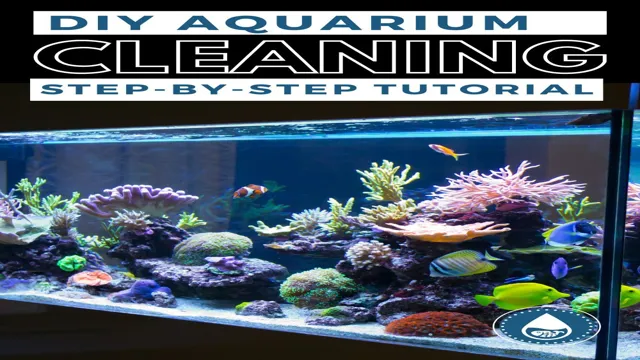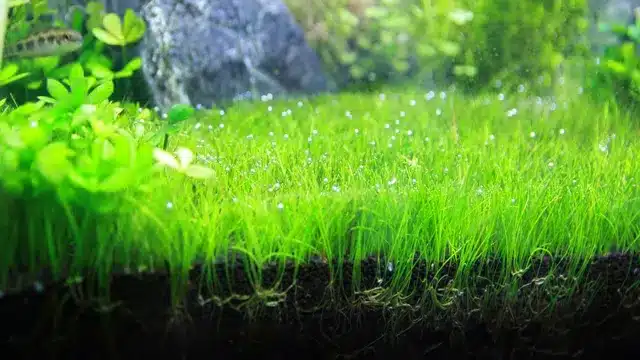Welcome to the world of aquarium keeping! It is no secret that having an aquarium is both a fascinating and rewarding hobby. However, maintaining one can be a daunting task, especially for beginners. Keeping a simple and proper aquarium is key to not only having healthy fish, but also to enjoy the long-term benefits of this hobby.
Think of an aquarium as a mini-ecosystem, where every component plays a role in its overall health and sustainability. From the size and type of tank to the type of fish, plants and equipment, every decision you make impacts the well-being of your aquatic pets. In this blog, we’ll explore the basics of aquarium keeping, from water quality, to temperature, filtration systems, feeding and more.
We’ll also delve into the importance of keeping it simple, and avoiding common mistakes that can lead to disappointment and frustration. Whether you’re new to the hobby or a seasoned aquarist, our goal is to provide you with helpful tips and insights on how to keep a simple and proper aquarium that you can enjoy for years to come. So, grab a cup of coffee, sit back, and let’s dive into the world of aquarium keeping!
Choosing the Right Aquarium
When it comes to setting up a proper aquarium, the first step is choosing the right tank size. A larger tank can accommodate more fish and allow them to move around freely, while a smaller tank can be easier to maintain. It’s important to also consider the type of fish you wish to keep and their specific needs.
Some fish require a specific water temperature, pH levels, and filtration systems. Additionally, choosing the right type of filtration system can help to keep your aquarium clean and healthy. When selecting decorations and substrate, it’s important to ensure they are safe for your fish and don’t affect the water quality.
By following these simple steps, you can keep your aquarium healthy and beautiful for years to come.
Consider the Size and Type of Fish
When choosing the right aquarium, it’s important to consider the size and type of fish you plan on keeping. Different species of fish have different needs in terms of space and water parameters. For example, a small Betta fish may do well in a 5-gallon tank, but larger fish like Cichlids or Goldfish require a much larger tank to thrive.
It’s also important to consider the activity level and swimming habits of the fish you plan on keeping. Some fish prefer open swimming spaces, while others prefer a more heavily planted environment. By understanding the needs of your fish, you can choose the right aquarium to provide them with a healthy and comfortable home.

Select an Appropriate Tank Size and Shape
When choosing the right aquarium for your fish, selecting an appropriate tank size and shape is crucial. Factors such as the number and size of fish you plan to keep, as well as the space available in your home or office, should all be taken into consideration. It’s essential to select a tank that can accommodate your fish’s needs, such as swimming and hiding spaces.
A tall, narrow tank may be suitable for some species, while others may require more surface area and a wider tank. Additionally, a larger tank can be more stable and easier to maintain, as it provides a larger water volume to dilute toxins. Keep in mind that investing in a high-quality, appropriately sized tank can save you money in the long run by reducing the risk of fish stress, illness, and premature death.
Overall, choosing the right aquarium involves assessing your specific needs and carefully researching various tank sizes and shapes before making a final decision.
Proper Filtration and Water Conditions
As an aquarium owner, it’s important to ensure that your aquatic pets are living in a healthy and safe environment. To keep a simple proper aquarium, one of the most essential factors to consider is proper filtration and water conditions. Your aquarium’s filtration system plays a key role in maintaining clean and healthy water for your aquatic pets.
It is recommended that you use a filtration system that is suitable for the size of your tank and the type of fish or plants you have. Along with proper filtration, it’s crucial to monitor and maintain the water conditions in your aquarium regularly. This includes testing the pH, ammonia, nitrite, and nitrate levels, as well as making sure the water temperature is suitable for your aquatic pets. (See Also: How to Get Wood to Not Float in Aquarium: Tips and Tricks)
With proper filtration and water conditions, you can help ensure a healthy and thriving aquarium for your beloved aquatic pets. So, remember to pay attention to these essential factors and provide your aquarium pets with a comfortable and safe living space!
Choose the Right Filter
When it comes to maintaining a healthy and thriving aquatic environment, proper filtration is key. Choosing the right filter can make all the difference in the world. There are a variety of options available on the market, so it’s important to consider the specific needs of your tank.
Factors such as the size of your tank, the types of fish you have, and even the type of substrate you use can all play a role in determining the type of filtration system that is best suited for your needs. In general, a good filter should be able to remove both physical and biological waste from the water, while also providing suitable water flow and circulation. By taking the time to carefully consider your options and choose a filter that meets your unique needs, you can help ensure that your fish and other aquatic creatures thrive in a clean and healthy environment.
Maintain Optimal Water Quality
Proper filtration and water conditions are critical for maintaining optimal water quality in your aquarium. A good filter is key to keeping the water clean and clear, removing wastes and debris that can harm your fish. There are many types of filters available on the market, from hang-on-back filters to canister filters, and each has its own strengths and weaknesses.
Another important factor is the chemical composition of the water, which can be affected by factors such as the pH level and the presence of toxins. Regular water testing and proper use of additives such as dechlorinators can help ensure that the water conditions remain suitable for your aquatic inhabitants. Taking the time to set up the right filtration system and maintain proper water conditions will not only keep your fish healthy and happy, but also enhance the overall beauty of your aquarium.
Perform Regular Water Changes
For any aquarium owner, proper filtration and water conditions are essential for the health and well-being of their aquatic pets. A crucial aspect of maintaining these conditions is regularly performing water changes. Over time, aquarium water can become contaminated with waste, uneaten food, and other harmful substances that can lead to poor water quality.
By replacing a portion of the aquarium water with fresh, treated water, you can reduce the levels of these contaminants and restore a healthy balance to the tank. The recommended amount of water to change is typically around 10-20% every one to two weeks depending on the size of your aquarium and the number of fish you have. Regular water changes also help to maintain stable water parameters, such as pH and temperature, which is important for the overall health of your fish.
So if you want to ensure your aquatic pets thrive in their underwater home, make sure to perform regular water changes and maintain proper filtration and water conditions for a healthy aquarium life.
Feeding and Care
When it comes to keeping a simple, proper aquarium, feeding and care are two essential components. Proper feeding will help ensure the health and wellbeing of your fish, while good care will keep your aquarium clean and functioning properly. First and foremost, it’s important to understand the specific needs of the fish you’re keeping in your aquarium, as different species have different diets and feeding habits.
Generally, it’s best to feed your fish small amounts of food multiple times throughout the day, rather than one large feeding. Overfeeding can lead to excess waste in the tank and potentially harm your fish. In terms of care, regular water changes and proper filter maintenance are crucial.
Additionally, be sure to monitor the temperature and pH levels in your tank and make adjustments as needed. A well-maintained aquarium can provide a beautiful and rewarding addition to any home.
Feed a Balanced Diet
When it comes to feeding your pet, it’s essential to provide a balanced diet. Just like humans, pets require a variety of nutrients to maintain their health and well-being. A balanced diet typically contains a mix of proteins, carbohydrates, healthy fats, vitamins, and minerals. (See Also: How to Make a Mini Puffer Fish Aquarium in Minecraft: A Step-by-Step Guide)
Many pet food manufacturers offer specialized diets for different life stages, breeds, and health conditions. It’s crucial to read the labels and choose quality pet food to ensure your pet receives all the necessary nutrients. Additionally, it’s essential to monitor your pet’s weight to prevent obesity, which can lead to various health problems.
Consult with your veterinarian or a pet nutritionist to determine the best diet for your furry friend. By providing a balanced diet, you can help your pet stay healthy and happy for years to come.
Monitor Fish Health and Behavior
When it comes to monitoring fish health and behavior, feeding and care are two of the most crucial factors to consider. Feeding your fish the right amount of food and providing them with a balanced diet is essential to keep them healthy and active. Overfeeding can lead to obesity, which can cause a variety of health problems.
On the other hand, underfeeding can lead to malnourishment, which can make them more susceptible to diseases. Checking the water quality and temperature of your tank is also important in maintaining a healthy environment for your fish. It’s a good idea to perform regular water changes and use a filtration system to keep the water clean and clear.
Observing your fish’s behavior is also critical in detecting any potential health problems. Changes in activity levels, swimming patterns, and eating habits can be an indication of illness. By paying attention to their behavior and providing them with proper care, you can ensure that your fish live a healthy and happy life in your aquarium.
Aquarium Maintenance
Maintaining an aquarium can be a fun and rewarding experience, but it requires regular care to keep your fish swimming happily. One of the most important things you can do to keep a simple proper aquarium is to perform regular water changes. This involves siphoning out a portion of the water and replacing it with fresh, clean water.
It’s also important to test the water regularly to ensure that pH levels and other important levels are within the appropriate range for the fish you’re keeping in your tank. Along with these basic maintenance tasks, it’s important to clean the aquarium itself, including rocks, gravel, and any decorations. By following these simple steps, you’ll be able to enjoy a healthy and beautiful aquarium for years to come.
Remember, proper aquarium maintenance can help prevent disease and keep your fish thriving, so make it a regular part of your routine.
Regular Cleaning and Maintenance Tips
Aquarium maintenance is essential for keeping your fish happy and healthy. One of the most important aspects of aquarium maintenance is regular cleaning. This involves weekly water changes, cleaning the substrate, and scrubbing algae off the glass walls.
It’s also important to test the water regularly to ensure that pH levels, nitrate and nitrite levels, and ammonia levels are all within the appropriate range. Another important factor in aquarium maintenance is proper feeding and removing uneaten food before it decomposes. This will help prevent the buildup of harmful bacteria in the tank.
Finally, make sure that all equipment, including filters, heaters, and air pumps, are in good working order. By following these regular cleaning and maintenance tips, you can ensure your aquarium stays clean, healthy, and beautiful for years to come, providing a happy and comfortable home for your underwater pets. (See Also: How to Get Rid of Parasite Snails in Aquarium: Step-by-Step Guide)
Conclusion
In conclusion, keeping a simple and proper aquarium requires dedication, attention to detail, and a genuine love for aquatic life. It’s important to maintain a balanced ecosystem through regular cleaning and water changes, selecting hardy fish that can thrive in the conditions you’ve created, and providing healthy food and suitable habitats. But most importantly, you must resist the temptation to overcomplicate things.
Remember, a happy aquarium is much like a happy life: keep it simple, keep it clean, and enjoy every moment of it!”
FAQs
What are the basic things needed to set up a simple aquarium?
To set up a simple aquarium, you will need an aquarium tank, filtration system, heater, substrate, decorations, lighting, and water conditioner.
How often should you change the water in a simple aquarium?
You should change 10-15% of the water in your aquarium every week to maintain its cleanliness.
How do you maintain the water quality in a simple aquarium?
To maintain the water quality in your aquarium, you need to test the water parameters regularly, keep up with water changes, and adjust the filtration and aeration system as needed.
What kind of fish are suitable for a simple aquarium?
There are many types of fish that can be kept in a simple aquarium, such as Betta fish, guppies, tetras, and mollies. However, it is important to research the specific needs of each fish species before adding them to your aquarium.
How can you prevent algae growth in a simple aquarium?
To prevent algae growth in your aquarium, you should limit the amount of light your aquarium receives, avoid overfeeding your fish, and maintain a regular cleaning schedule.
How do you acclimate fish to a simple aquarium?
To acclimate fish to your aquarium, float the bag containing the fish on the surface of the aquarium water for 15-20 minutes. Then, add a small amount of aquarium water to the bag every 5-10 minutes for 30-45 minutes before releasing the fish into the aquarium.
How do you clean a simple aquarium?
To clean your aquarium, you should remove debris from the substrate, clean the glass, and replace the filter media as needed. It is also important to perform regular water changes to maintain the water quality.







